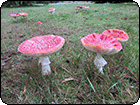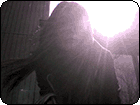Photo Critique -- How did this shot go wrong? OK, a couple of nights ago, I was walking along Avenue A and I tried to get a shot of
→[More:] the full moon over Tompkins Square Park and a taxi speeding by. The camera was a point-and-shoot Canon SD750. No flash. Hand-held.
It's not a great photo, as you can see.
How could I have done this better?
 photo by splunge
photo by splunge
 photo by TheophileEscargot
photo by TheophileEscargot
 photo by Kronos_to_Earth
photo by Kronos_to_Earth
 photo by ethylene
photo by ethylene